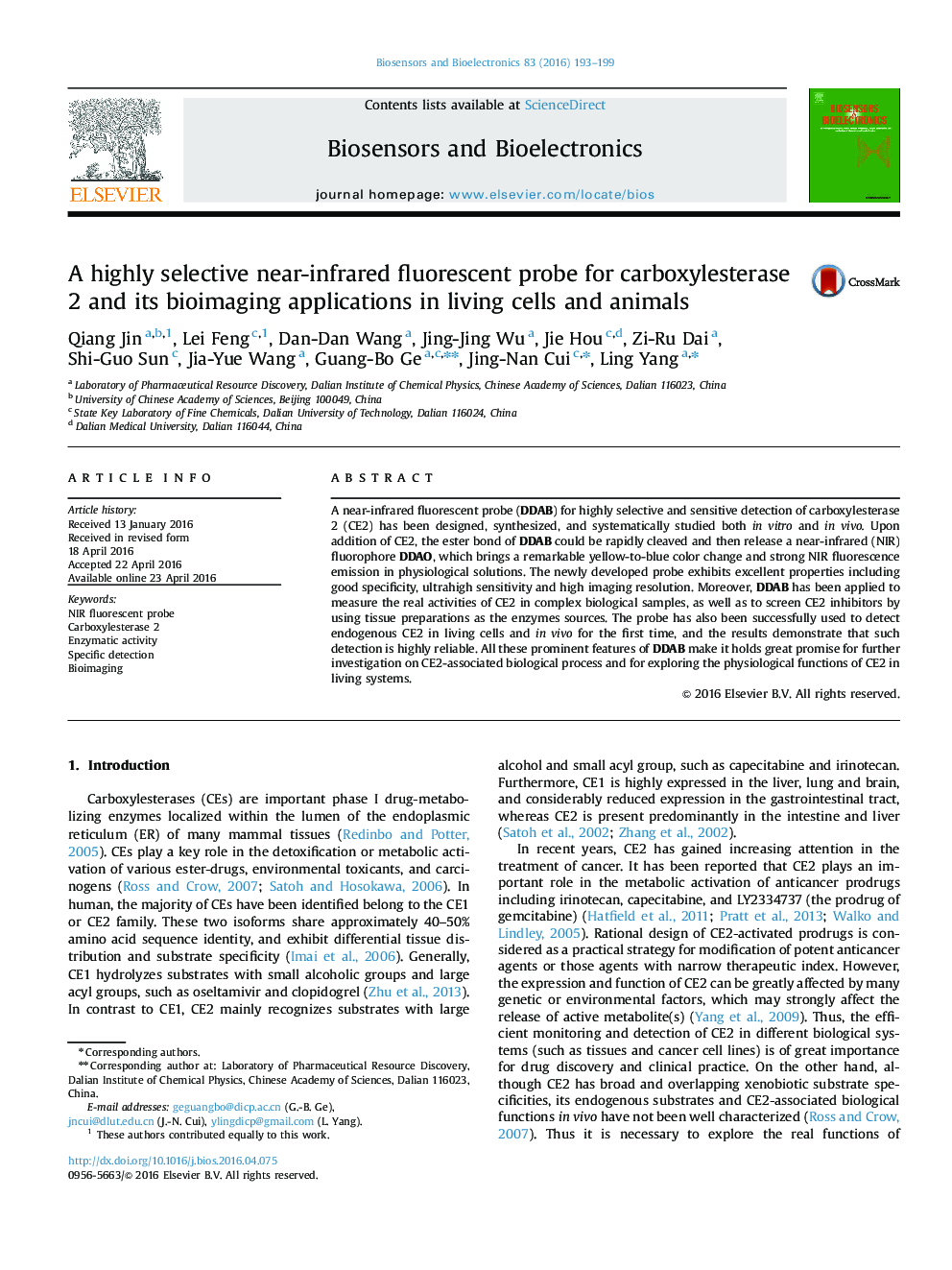| کد مقاله | کد نشریه | سال انتشار | مقاله انگلیسی | نسخه تمام متن |
|---|---|---|---|---|
| 866220 | 1470948 | 2016 | 7 صفحه PDF | دانلود رایگان |
• A near-infrared fluorescent probe for carboxylesterase 2 (CE2) has been designed.
• This probe exhibits good specificity, ultrahigh sensitivity, and fast reaction kinetics.
• This newly probe can be used for sensing CE2 in living cells and animals.
A near-infrared fluorescent probe (DDAB) for highly selective and sensitive detection of carboxylesterase 2 (CE2) has been designed, synthesized, and systematically studied both in vitro and in vivo. Upon addition of CE2, the ester bond of DDAB could be rapidly cleaved and then release a near-infrared (NIR) fluorophore DDAO, which brings a remarkable yellow-to-blue color change and strong NIR fluorescence emission in physiological solutions. The newly developed probe exhibits excellent properties including good specificity, ultrahigh sensitivity and high imaging resolution. Moreover, DDAB has been applied to measure the real activities of CE2 in complex biological samples, as well as to screen CE2 inhibitors by using tissue preparations as the enzymes sources. The probe has also been successfully used to detect endogenous CE2 in living cells and in vivo for the first time, and the results demonstrate that such detection is highly reliable. All these prominent features of DDAB make it holds great promise for further investigation on CE2-associated biological process and for exploring the physiological functions of CE2 in living systems.
A colorimetric near-infrared fluorescent probe (DDAB) for highly selective and sensitive detection of carboxylesterase 2 (CE2) has been designed and well-characterized. This newly developed probe can be used for sensing CE2 in living cells and animals, and holds great promise for exploring the biological functions of CE2 in complex biological systems.Figure optionsDownload as PowerPoint slide
Journal: Biosensors and Bioelectronics - Volume 83, 15 September 2016, Pages 193–199
